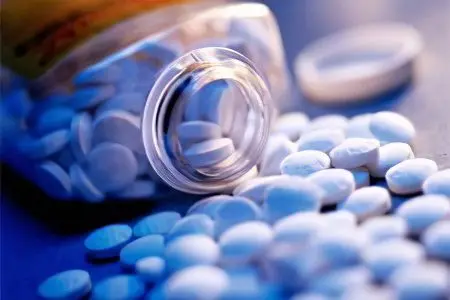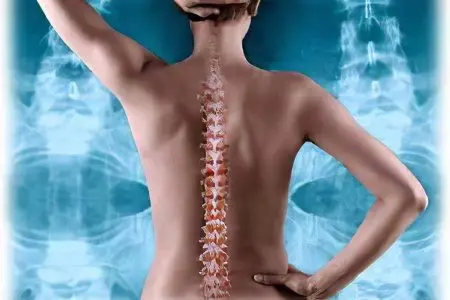Contents
Diseases of the spine and joints “get younger” from year to year, and now not only elderly people, but also patients from 30-40 years old turn to doctors.
Herniated discs, osteochondrosis and joint diseases occur not only due to increased loads and injuries of the musculoskeletal system. The cause of these diseases may be insufficient blood supply to cartilage tissue, which is often found in people who lead a sedentary lifestyle.
Treatment of intervertebral hernia was previously carried out only with the use of analgesics and non-steroidal anti-inflammatory drugs.
Now, other drugs of conservative treatment have appeared, belonging to the group of chondroprotectors, which not only relieve inflammation, but also help restore cartilage tissue, the volume and viscosity of the joint fluid, while not having strong side effects.
The structure of the intervertebral discs

Intervertebral discs perform the most important function in the body – they provide strength to the structure of the spine, cushion it when walking and exertion, preventing damage to the spinal cord.
The intervertebral disc consists of a gelatinous or pulpous nucleus, an annulus fibrosus and two cartilaginous plates.
The nucleus pulposus has a jelly-like structure and is necessary for the cushioning of the spine.
The fibrous ring consists of many concentric plates and is fixed to the vertebral body with the help of ligaments. The fibrous ring prevents the protrusion of the nucleus pulposus, so the formation of a hernia is always associated with its rupture.
The cartilaginous plates are associated with the vertebral body, the annulus fibrosus and the nucleus pulposus. When the processes of devascularization begin, and the blood supply to the intervertebral discs decreases due to the vessels, further nutrition of the intervertebral discs is provided by cartilaginous plates.
A herniated disc in the cervical and lumbar region is very dangerous, because with the progression of the disease it can lead to circulatory disorders in the brain or loss of bowel and genitourinary system function.
How does a hernia develop?
A healthy intervertebral disc has a very resilient and elastic annulus fibrosus, which has a minimal risk of rupture. However, age-related changes in the body, excessive stress and a sedentary lifestyle can provoke degenerative processes in the intervertebral discs, and then the development of the disease becomes quite natural.
Physiological changes in the intervertebral discs lead to a decrease in their elasticity. The fibrous ring loses its ability to retain fluid, which threatens with dehydration and cracking. In the nucleus pulposus, the amount of collagen increases, while the amount of mucoproteins, on the contrary, decreases. In this state, the intervertebral disc is very vulnerable, there is a risk of rupture of the fibrous ring, which most often occurs in its back part, where it is least tightly connected to the vertebra. Under the pressure of the nucleus pulposus, the ring first stretches (protrusion), and then breaks. A prolapse or herniation of the intervertebral disc is formed.
Most of these changes are age-related, but metabolic disorders, a sedentary lifestyle, and hereditary factors can provoke them.
So, with age, the blood supply to the intervertebral discs decreases due to blood vessels – this process is called devascularization. Nutrition and constant blood flow are very important for the health of the intervertebral discs. Violation of the blood supply is the reason why a hernia occurs not only among miners and weightlifters, whose spine is under enormous stress, but also among office workers who lead a sedentary lifestyle.
As the load on the spine increases, the incorrect distribution between its sections, the degenerative processes in the intervertebral discs intensify, which, in the end, leads to the protrusion of the nucleus pulposus beyond the fibrous ring. In the first stages, a hernia may not manifest itself in any way – there is no pain syndrome if the nucleus does not pinch the nerve.
Symptoms of a herniated disc include:
Pain at the location of the hernia – if it is located in the lumbar spine, then the pain can be given in the legs and cause them to become numb. In addition, a lumbar hernia manifests itself as a number of dysfunctions of the intestines, pelvic organs, reproductive and urinary systems.
Fatigue and weakness even after little physical activity, such as walking or climbing stairs.
Partial paralysis or paresis in a certain area of the body, observed with hypertonicity or hypotonicity of the muscles.
Sharp pains when you try to bend, stretch your neck or turn your head – tension syndrome.
Vertebral artery syndrome – develops with a hernia in the cervical spine and manifests itself as periodic dizziness, headaches, visual and hearing disorders. In the absence of timely treatment, the disease can cause irreversible damage to the central nervous system.
Radicular syndrome – pain in the area of the affected nerve, weakening and atrophy of muscles in the area of its action, violation of tendon reflexes.
In 10% of hernia cases, patients need surgery. Due to possible complications, it is prescribed only for severe pain, loss of sensation in the limbs, loss of control over the urinary system, which leads to spontaneous urination. If the pinched hernia does not have pronounced symptoms, then the doctor prescribes conservative treatment drugs, including chondroprotectors.
Chondroprotectors: what is the mechanism of action?

The main active ingredients of chondroprotectors – chondroitin sulfate and glucosamine – are structural components of cartilage tissue, without them, the processes of regeneration of damaged vertebrae and joints are impossible. With their increased concentration in the blood, regenerative processes begin in the cartilaginous tissue of the intervertebral discs, pain and swelling around the damaged area of the spine disappear.
Chondroitin sulfate acts on chondrocytes, stimulates the production of structural components of cartilage, which include collagen, proteoglycan, hyaluronic acid, glycosaminoglycans. Able to influence the cellular factor of inflammation, reducing its intensity, slows down and stops the destruction of cartilage. Activates the processes of synthesis of intra-articular fluid.
Glucosamine exhibits antioxidant activity, protecting tissues from the effects of free radicals, stimulates the production of hyaluronic acid and its own chondroitin, heparin and glycoproteins. Improves the quality of synovial fluid, restoring joint mobility. Reduces the activity of lysosomal enzymes and the number of free radicals.
List of chondroprotective drugs
The active substance of most chondroprotectors is chondroitin sulfate, which is extracted from the cartilage tissues of animals.
Experts are discussing which substance in the composition of the chondroprotector is more effective – chondroitin sulfate or glucosamine. In the treatment of arthrosis and hernia of the spine, monopreparations of both one and the other substance are used, so the final decision remains with the attending physician. Chondroitin has an anti-inflammatory effect, when used externally in the form of an ointment, it can relieve swelling and reduce pain.
Glucosamine stops the destruction of joint tissue, promotes the production of its own chondroitin sulfate and hyaluronic acid.
Modern classification of drugs depending on the composition:
Monopreparations tychondroitin sulfate: Chonsuride, Structum, Chondrolon, Mucosat, Chondroxide, Chondramed;
Monopreparations of glucosamine: Dona, Elbona, Glucosamine sulfate, Pharmaskin TGK, Aminoarthrin;
Combined drugs: Teraflex, Kondronova, Chondrosamine, Artra.
Indications for the use of chondroprotectors
Chondroprotectors are prescribed together with the basic therapy of osteochondrosis and other diseases of the spine, combined with moderate physical activity in the form of exercises to warm up the affected areas, as well as with vitamin therapy under the supervision of a doctor.
Chondroprotectors are taken to reduce pain and inflammation, drugs of this group effectively restore joints in the first stages of arthrosis, promote the regeneration of cartilage tissue and enhance the synthesis of its structural components.
The drugs are administered orally in the form of a powder or tablets, in the form of an ointment for application in the area of localization of inflammation, as well as intramuscular and intraarticular injections.
Has the effectiveness of chondroprotectors been proven?

Since the cause of the development of a hernia is, first of all, the insufficient supply of intervertebral discs with nutrients and oxygen that come from the blood, treatment with chondroprotectors cannot be the only treatment measure. The drugs enter the blood, and together with the blood they must reach the affected area and act on it, but if the blood supply is disturbed, the result of such treatment will be zero. Therefore, it is important to perform physiotherapy exercises so that the blood rushes to the muscles and tissues in the area of the hernia, and with it the chondroprotector enters there.
Clinical trials have shown the effectiveness of chondroprotectors as drugs for the conservative treatment of intervertebral hernia. The course of admission is at least six months or more, while the hernia is reduced by 1 mm every 6 months. Chondroprotectors help prevent the appearance of a hernia in other parts of the spine and are an excellent prevention of osteochondrosis.
Feedback on the use of chondroprotectors
“I went to the doctor with complaints of pain in the back and legs, a hernia was discovered. In addition to anti-inflammatory drugs, the doctor recommended chondroprotectors. After a couple of months of use, the pain began to appear less frequently, the hernia did not disappear anywhere. The doctor said that conservative treatment was ineffective in my case, and chondroprotectors simply reduced pain manifestations.
“I went through a complex of procedures for the treatment of a hernia in the clinic. The doctor prescribed Chondroxide in combination with iontophoresis, plus exercise therapy. Pain sensations disappeared already in the second month after the procedures, but not completely, sometimes pains appear. The hernia did not go away, but no new pinches were found.
“I took Teraflex one capsule a day for pain in the joints and lower back. The back stopped bothering by the end of the first week of taking it, but the knees hurt from time to time, although not as much as before. Doctors did not find a hernia or prolapse”
“At one time I tried many popular chondroprotectors to relieve pain from a lumbar hernia. He took Dona in capsules, applied Chondroxide in the form of an ointment externally – ineffectively. It helped only in combination with phonophoresis, the pain disappeared, the hernia slightly decreased, but did not disappear completely.”









